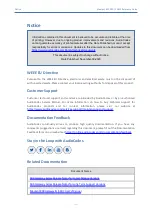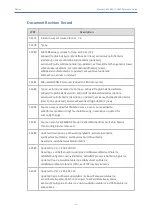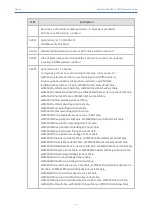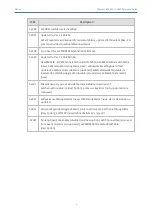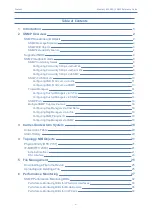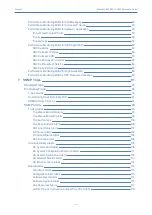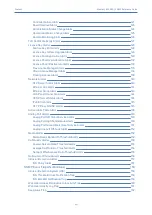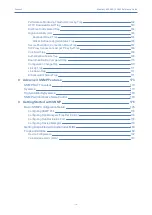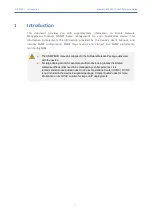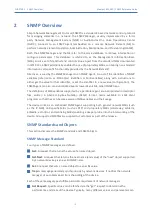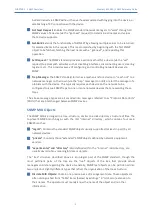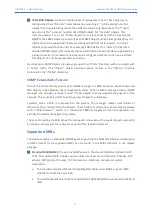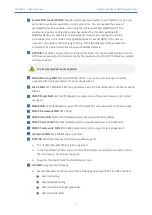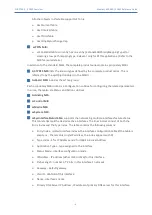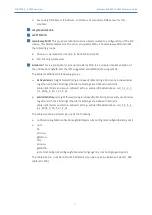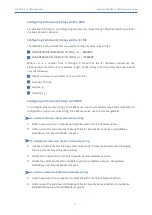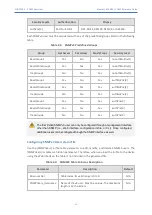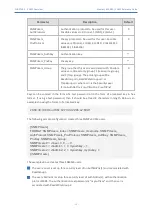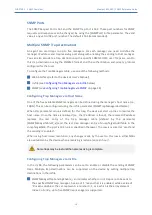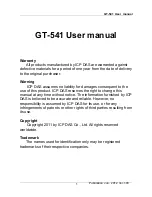
CHAPTER 2 SNMP Overview
Mediant 800 SBC | SNMP Reference Guide
be determined via SNMP without the overhead associated with logging into the device, or
establishing a TCP connection with the device.
■
Get Next Request:
Enables the SNMP standard network managers to "walk" through all
SNMP values of a device (via the "get-next" request) to determine all names and values
that a device supports.
■
Get-Bulk:
Extends the functionality of GETNEXT by allowing multiple values to be returned
for selected items in the request. This is accomplished by beginning with the first SNMP
object to be fetched, fetching the next name with a "get-next", and repeating this
operation.
■
Set Request:
The SNMP standard provides a action method for a device (via the "set"
request) to accomplish activities such as disabling interfaces, disconnecting users, clearing
registers, etc. This provides a way of configuring and controlling network devices via
SNMP.
■
Trap Message:
The SNMP standard furnishes a mechanism for a device to "reach out" to a
network manager on their own (via the “trap" message) to notify or alert the manager of a
problem with the device. This typically requires each device on the network to be
configured to issue SNMP traps to one or more network devices that are awaiting these
traps.
The above message types are all encoded into messages referred to as "Protocol Data Units"
(PDUs) that are interchanged between SNMP devices.
SNMP MIB Objects
The SNMP MIB is arranged in a tree-structure, similar to a disk directory structure of files. The
top-level SNMP branch begins with the ISO "internet" directory, which contains four main
SNMP branches:
■
"mgmt":
Contains the standard SNMP objects usually supported (at least in part) by all
network devices.
■
“private":
Contains those "extended" SNMP objects defined by network equipment
vendors.
■
"experimental" and "directory":
Also defined within the "internet" root directory, are
usually devoid of any meaningful data or objects.
The "tree" structure described above is an integral part of the SNMP standard, though the
most pertinent parts of the tree are the "leaf" objects of the tree that provide actual
management data regarding the device. Generally, SNMP leaf objects can be partitioned into
two similar but slightly different types that reflect the organization of the tree structure:
■
Discrete MIB Objects:
Contain one precise piece of management data. These objects are
often distinguished from "Table" items (below) by adding a “.0" (dot-zero) extension to
their names. The operator must merely know the name of the object and no other
information.
- 3 -


